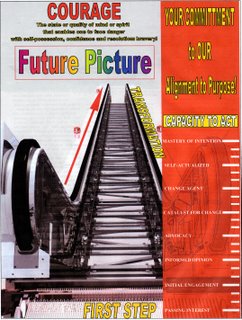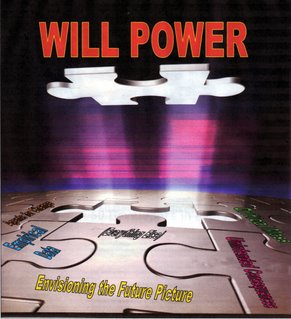YOU are OUR FUTURE, TODAY!
Colonial School District is among the first districts to receive a "Classrooms for the Future" grant from the Pennsylvania Department of Education.
By News Staff
In September 2006, Pennsylvania Gov. Edward G. Rendell announced "Classrooms for the Future," an initiative to transform the high school learning experience. The program will put a laptop computer on every high school English, math, science and social studies desk and provide teachers with a multimedia workstation and intensive training to enhance education. The governor's 2006-07 budget provided $20 million for the first year of the initiative, with plans to expand the program statewide.
An additional $6 million in state and federal resources will be used to train teachers and administrators on how to best harness the power of technology to enhance classroom discussions, lessons and projects.
In addition to the laptops, each classroom will be equipped with an interactive whiteboard and projector, Web cams and other video cameras. Teachers and students will also have access to imaging software.
According to the Pennsylvania Department of Education's Web site, Classrooms for the Future "is designed to ensure there is a laptop on every high school classroom desk in English, Math, Science and Social Studies in all public high schools and career and technical centers in Pennsylvania ... High school students are poised to enter the global marketplace or to continue their education beyond preK-12 and it is our obligation to prepare them within a short window of opportunity." Seventy-nine school districts were selected to participate in the first year of the program.
The Colonial School District is among the first districts to receive a Classrooms for the Future grant from the Pennsylvania Department of Education. The $202,539 grant is among the largest issued to a single school and will be used to purchase 192 wireless student laptops for classroom use the Plymouth Whitemarsh High School (PWHS) Social Studies Department, as well as provide staff development and training.
The entire PWHS campus was equipped with wireless capability as part of an extensive upgrade of technology resources. Interactive whiteboards and high-powered digital overhead presenters connected directly to a video/data projector for real-time viewing were installed in 52 classrooms in time for the start of the school year. There are presently 90 of these classrooms engaging students in the Colonial School District this fall. An additional 32 classrooms are scheduled to be online for the 2007-08 school year thanks to the ongoing support of the community and the school board of directors.
"This grant confirms that the Colonial School District has been on the cutting edge of technology and the use of technology to deliver curriculum for the past three years," said Superintendent Dr. Vincent F. Cotter. "From extensive use of data analysis to interactive classrooms, Colonial has been a leader in utilizing technology to educate our students. This grant gives us the impetus to accelerate our technology implementation schedule."
As part of its Classrooms of the Future Grant, Colonial uses a server-based digital video delivery system, a pre-screened academic content search engine, Internet2 and conferencing solutions. In spring 2006, middle school students learned about Australia's Great Barrier Reef through a video conference with instructors from down under.
The district Web site is an integral portal for students, teachers, parents, community members and school board members to stay informed on major developments taking place in the district. The K-12 social studies curriculum is online and available to all stakeholders. Resources aligned with the curriculum are also available via the Web site. Teachers have created best practice lessons that can be implemented and shared using all of the technologies available; this model is currently being applied to other content areas such as language arts, science and math. The district continues to expand the framework, moving to a portal solution to provide all the instructional tools necessary for the 21st century classroom.
Laptop equipment from the Classrooms for the Future grant is expected to be released to the district first as one of selected pilot schools ready for implementation into the classroom instructional program. The 192 wireless laptops are just the first phase in the Classrooms for the Future grant from PDE. Approximately 720 additional laptops will be brought online in the next two years, pending finding approval by the Pennsylvania Legislature. Those laptops will support the language arts, math and science curriculum.
Classrooms for the Future is a $250 million, three-year comprehensive high school reform project that leverages all of Pennsylvania's education efforts. The program recognizes and embraces the need for high school reform, enables teachers to use technology as an effective tool for educating students and prepares students to enter and successfully compete in the ever-expanding high-tech global marketplace.





 EarthLink announced yesterday the launch of the EarthLink Digital Future Program, which is designed specifically to promote digital inclusion among citizens in municipalities across the country. In conjunction with the program's formal launching, the company also announced its first pilot at the Featherfist Homeless Shelter in Chicago, where a computer lab with Wi-Fi service has been established -- the first of 17 to be established at homeless shelters throughout the city.
EarthLink announced yesterday the launch of the EarthLink Digital Future Program, which is designed specifically to promote digital inclusion among citizens in municipalities across the country. In conjunction with the program's formal launching, the company also announced its first pilot at the Featherfist Homeless Shelter in Chicago, where a computer lab with Wi-Fi service has been established -- the first of 17 to be established at homeless shelters throughout the city.
